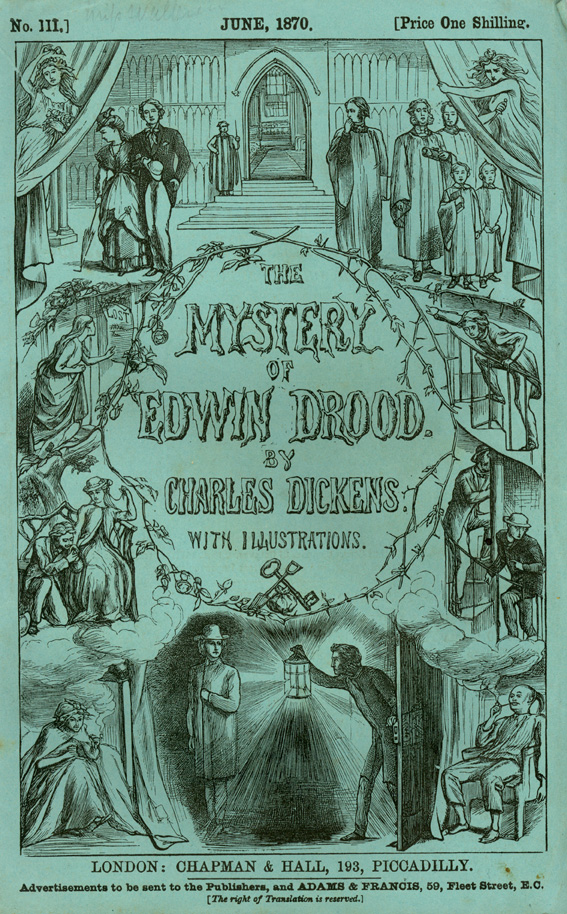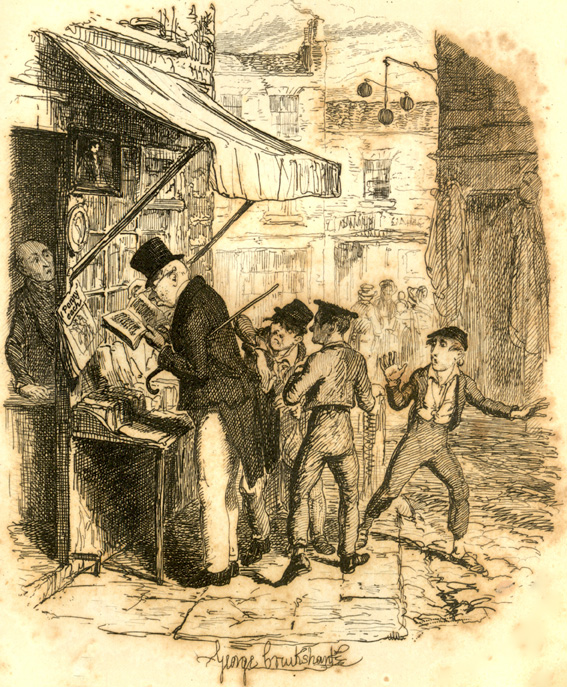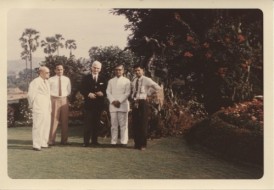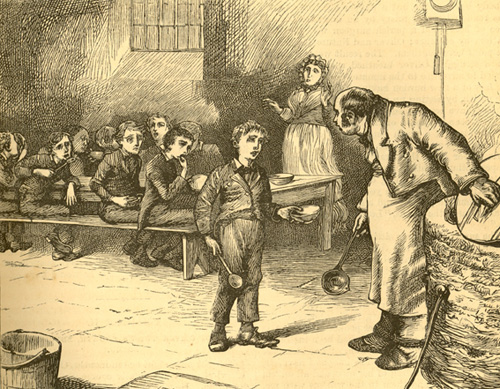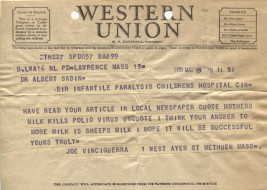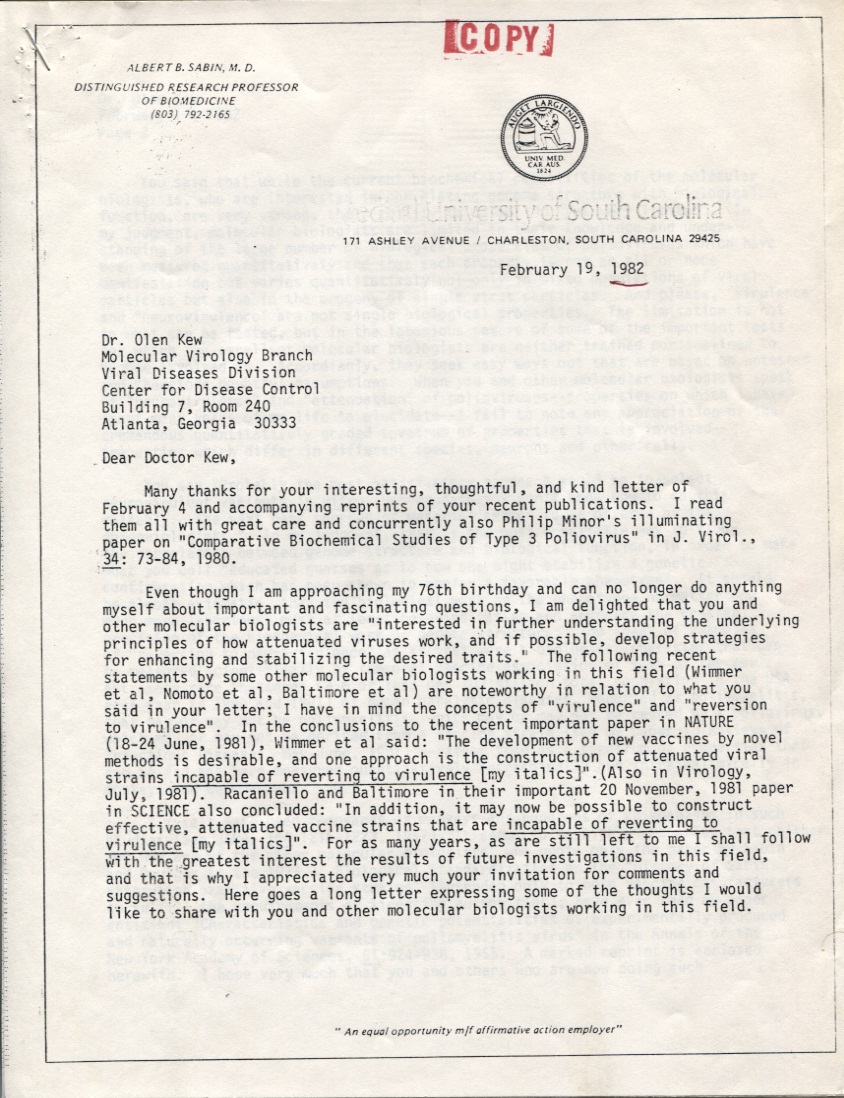
This is the first page of the 1982 letter from Dr. Sabin to Dr. Kew, which Dr. Racaniello refers to in his article.
Recently I received a Google alert for an article that mentioned Dr. Sabin. The article was about a live debate on H5N1 viruses sponsored by the New York Academy of Sciences, and it briefly discussed Dr. Vincent Racaniello’s opinion on using ferrets as “models of flu effects in humans.” According to the article, “when [Dr. Racaniello] began studying viral pathogenesis under Albert Sabin and other eminent experts, ‘The first thing they said was when you study viruses in animals, don’t think you’ll learn much about what happens in humans.’”
Since Dr. Racaniello specifically mentioned Dr. Sabin, I thought I would do a little bit of research on their connection. This led me to a 1993 article by Dr. Racaniello that appeared in an issue of Biologicals dedicated to Dr. Sabin. I found Dr. Racaniello’s discussion of how Dr. Sabin influenced his research quite interesting, so I thought I would share some of the materials that he refers to in the article. Continue reading


